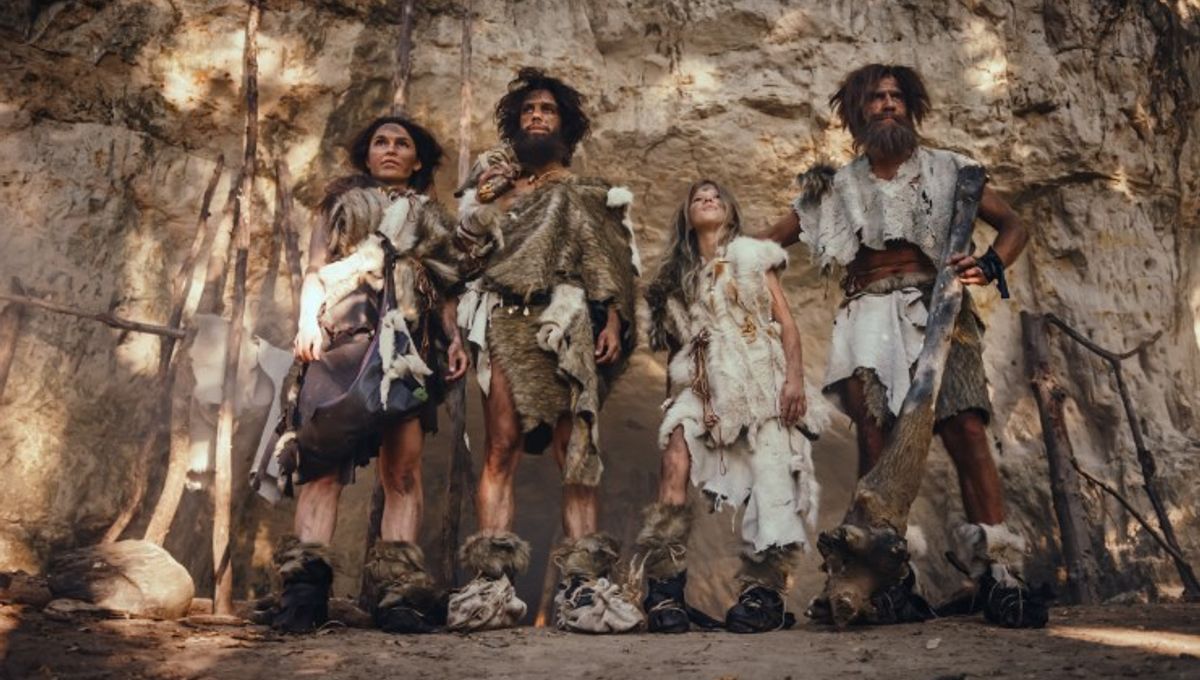
Despite disappearing around 40,000 years ago, Neanderthals continue to live on in the DNA of most modern humans. The persistence of these ancient genes indicates that our distant ancestors had a thing for stocky, big-nosed hominids, and new research has revealed exactly how these interspecies sexy times played out.
It’s estimated that between 1 and 4 percent of the genomes of all non-African humans alive today come from Neanderthals. These genes have helped to shape our appearance and behavior, although until now researchers had struggled to recreate the encounters that resulted in this exchange of genetic material.
To piece the story together, the authors of an as-yet un-peer-reviewed study analyzed the genomes of 59 ancient Homo sapiens individuals, all aged between 45,000 and 2,200 years old. Of these, 33 lived more than 10,000 years ago, with Siberia’s famous Ust’-Ishim man being among the oldest of the lot.
These prehistoric genomes were then compared to those of 275 present-day humans from across the world. Using computer software, the researchers were able to trace the evolution of Neanderthal genes across the millennia and work out exactly how many generations it would have taken for them to diverge in the way they did.
“By measuring the ancestry covariance for each of the 16 ancient individuals that lived between 40,000 and 20,000 [years ago], we infer that the Neandertal gene flow occurred between 321 and 950 generations before these individuals lived,” write the study authors. More specifically, they found that the flow of Neanderthal DNA into the modern human genome occurred over a period of 6,832 years, with the average time of introgression being 47,124 years ago.
In other words, the love affair between Homo sapiens and Neanderthals began around 47,000 years ago and lasted for almost seven millennia.
The full impact of this prehistoric petting is something we’re still trying to unravel, although it’s clear that Neanderthal ancestry is not found in all regions of our genome. Some regions are completely devoid of Neanderthal DNA and are therefore known as “archaic deserts”, while others contain unusually high levels of Neanderthal variants.
This suggests that much of the genetic material we picked up from our ancient cousins was probably deleterious and therefore disappeared thanks to natural selection. Certain genes, however, may have conferred survival advantages, and were passed on down the generations.
Exploring these so-called “candidates of adaptive introgression”, the researchers came across 347 Neanderthal genes that are well-preserved in both ancient and present-day populations, “suggesting that many of these genes were immediately beneficial to modern humans as they encountered new environmental pressures outside Africa.”
According to the researchers, these helpful Neanderthal genes are largely found in regions of the genome that are “related to skin pigmentation, metabolism and immunity.”
A preprint of the study can be found on bioRxiv.
Source Link: We Now Know Exactly When Humans And Neanderthals Hooked Up